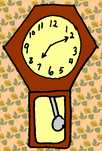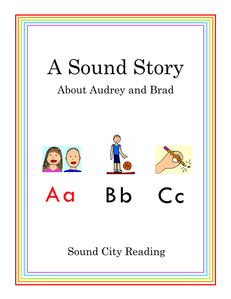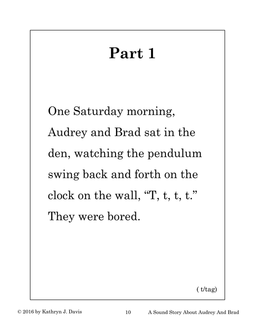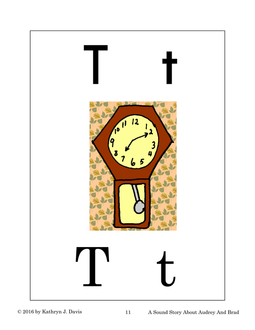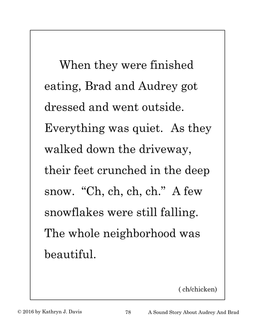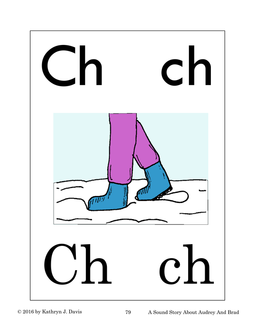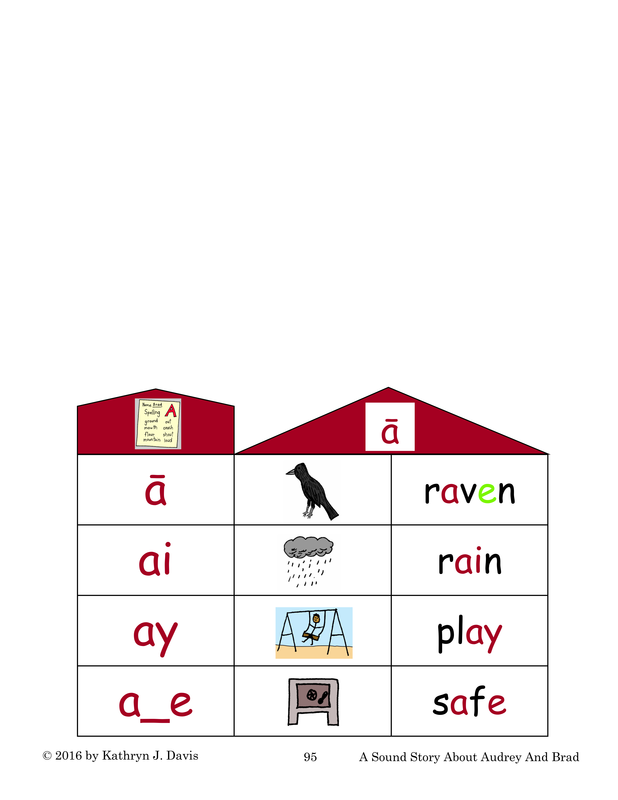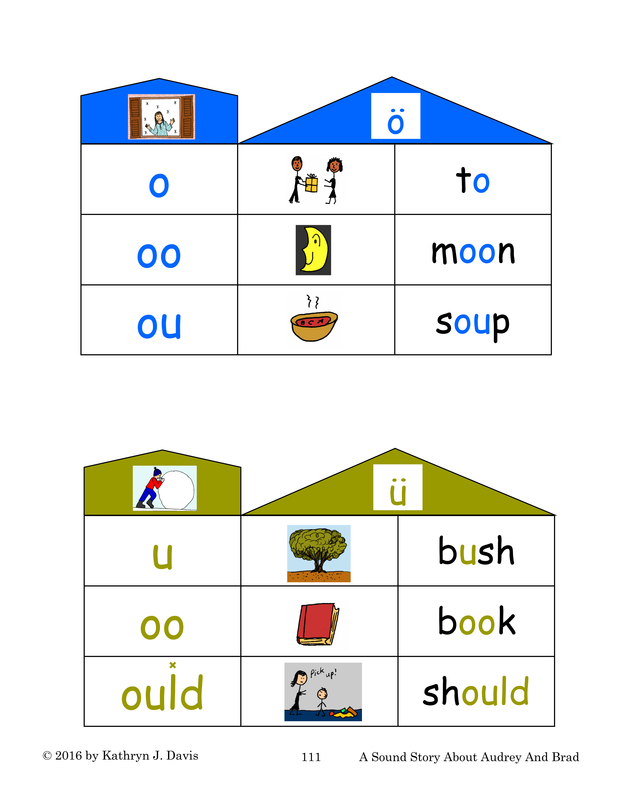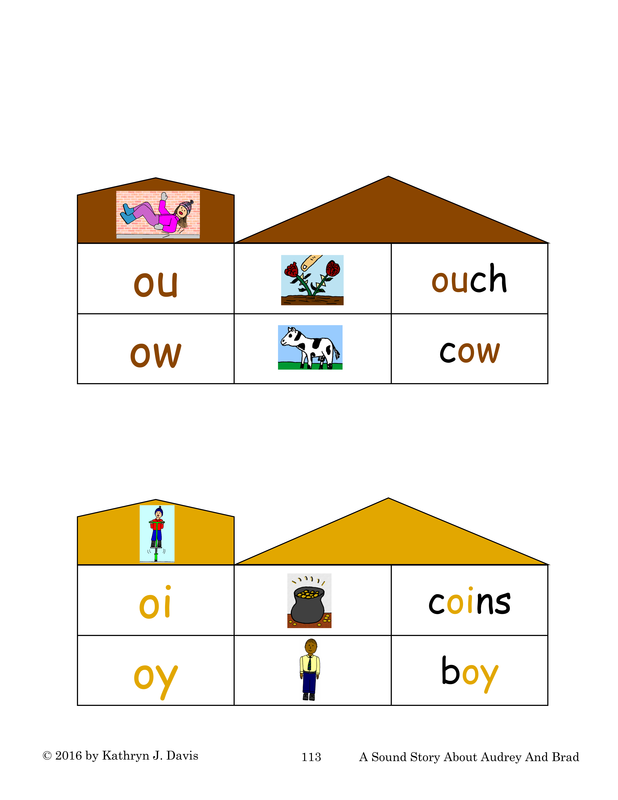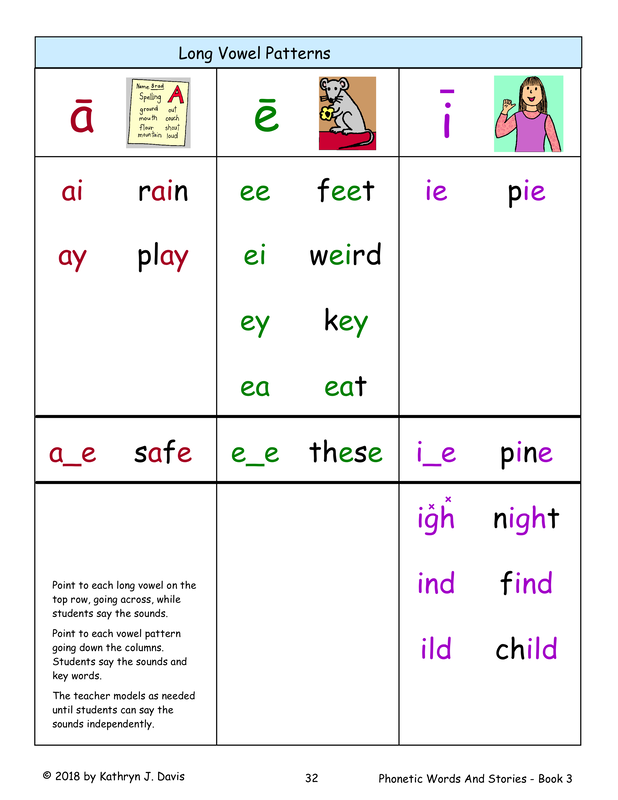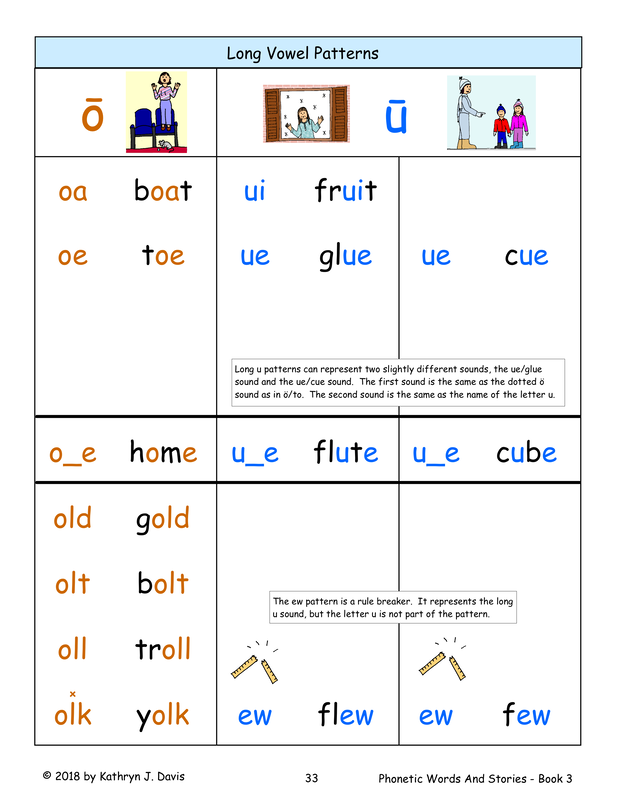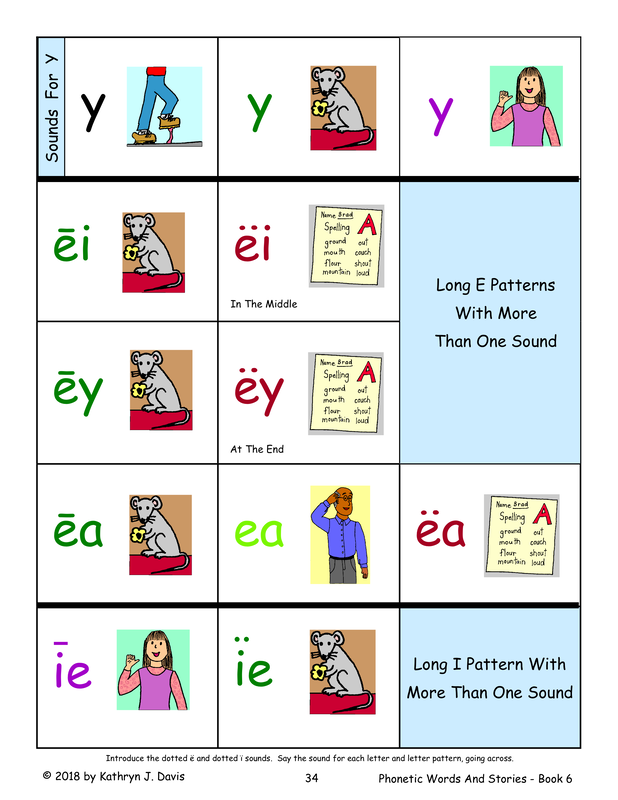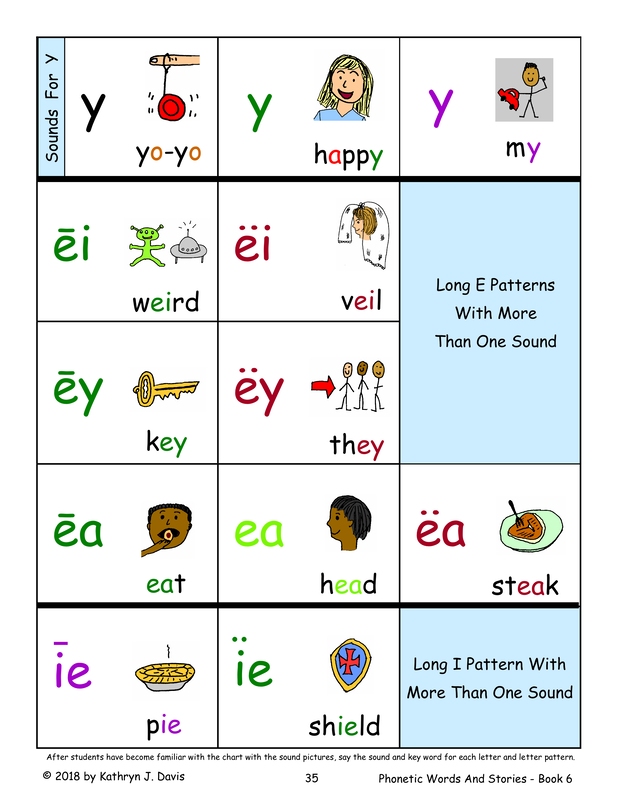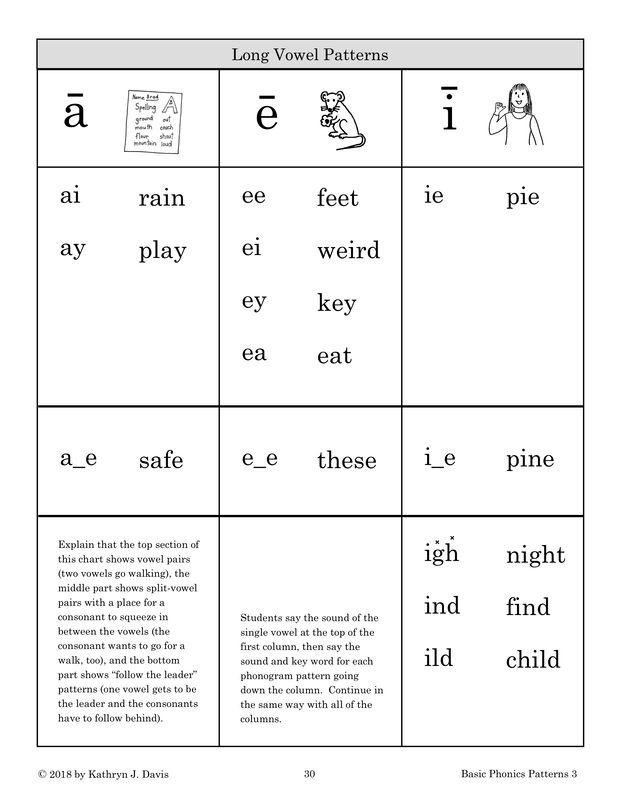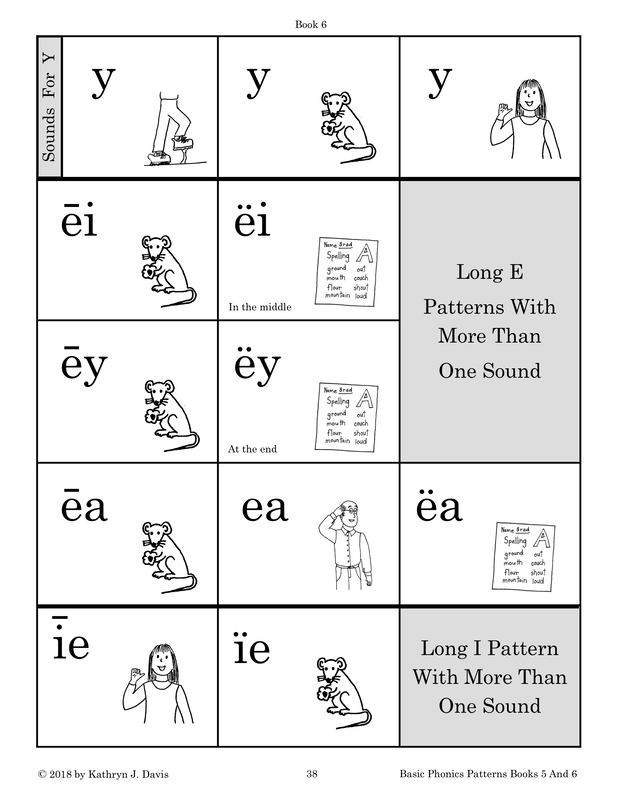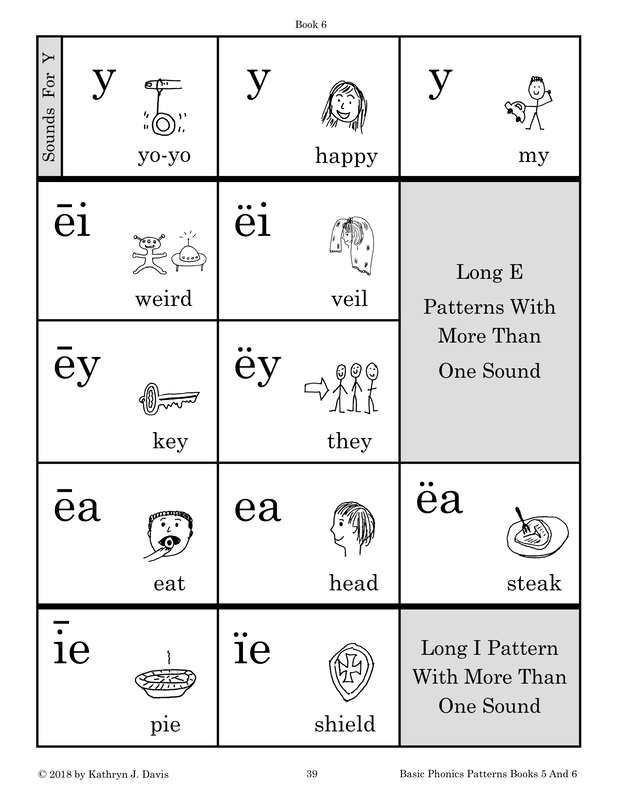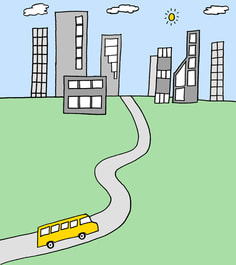If you can't see the main menu at the top of the page, you can click any of the main menu headings here:
A Sequential Phonics Program - Program Overview - PDF Files - Pictures - Audio - Video - Reading Street - Blog
A Sequential Phonics Program - Program Overview - PDF Files - Pictures - Audio - Video - Reading Street - Blog
A Sound Story About Audrey And Brad
|
A Sound Story About Audrey And Brad introduces all of the sounds in the English language, using pictures to represent the specific speech sounds. For example, students see a growling dog (r sound), the wind blowing (w sound), and a bouncing ball (b sound). Each picture is paired with the capital and lower case letters (in two different fonts) that represent the same sound in words. The teacher reads each section of the story aloud and points out the picture and letters, demonstrating their sounds. Students listen and watch, repeating the sound as the teacher points to the picture and each of the letters. The sound pictures are used at every instructional level from beginning through advanced.
The book A Sound Story About Audrey And Brad has large print and large color pictures. It will work well when reading the story aloud to a class. A smaller version of the sound story is included in most of the Sound City Reading books. The smaller version can be used with individual students.
|
Open the AUDIO menu to find files that will allow you to listen to the sound story read aloud.
Open the VIDEO menu to find videos of part one of the sound story. |
Part One And Part Two Of The Sound Story
The sound story is divided into two main sections.
Part one teaches the letters of the alphabet, including the basic consonant sounds, the five short vowel sounds, and the long ī sound. The long ī sound is taught early so that students will have a better understanding of the sight word I, which is taught at level three.
Part two introduces the consonant digraph sounds and the remaining vowel sounds, including the long vowel sounds, the dotted vowel sounds, and diphthongs oi/oy and ou/ow. These are called the "beyond the alphabet" sounds.
How The Pictures Are Used
The sound pictures are useful because they can show the sound or sounds for each letter and letter pattern used in the English language. Although there are only twenty-six alphabet letters, there are also many multi-letter patterns that must be learned. For example, the ai/rain, ay/play, and a_e/safe patterns can all be used to show the long ā sound. The sound picture for the long ā sound can be used with all of these patterns.
Sometimes the same letter or letter pattern can represent than one sound, for example i/in, ī /island, ï/pizza, or ēa/eat, ea/head, ëa/steak. In these cases, sound pictures on charts can show students all of the sounds that a particular letter or letter pattern can represent.
Sound charts are found at the beginning of most of the Sound City Reading phonics books. The sound charts show each of the letters and phonetic patterns that have been taught along with the sound pictures that represent their sounds. Similar phonetic patterns are grouped together, making it easier for students to remember them. For example, all of the long vowel patterns are grouped together on the same chart, all of the consonant digraphs are grouped together, and so on. The charts in the books can be used daily with individual students to review the sounds for all of the letters and phonics patterns that have been taught.
Large Wall Charts With Sound Pictures
Large versions of the sound charts are available to post on a classroom wall or on bulletin boards. This makes it easy for the teacher to review the letters and patterns each day with the whole class, using a long pointer. The teacher points to the patterns on the sound charts that have been taught, while the students say the sound or sounds for each pattern in unison. If students can't remember the sound for a particular pattern, the teacher can point to the sound picture to remind students of the correct sound.
Sound Charts Included In The Sound Story Book
A Sound Story About Audrey And Brad includes letter sized alphabet and phonics pattern charts. Patterns that are alike are grouped together. Sound pictures show the sound for each letter or pattern. For example, all of the patterns that can represent the long ē sound are shown on the same chart with the picture for the long ē sound. Students can study the charts from the book, or the charts can be removed and posted on a wall, a bulletin board, or a display board. These charts are not large enough to be seen from a distance, but they will work well with small groups sitting close to them.
Sound Pictures And Charts Used At Each Level
Students at levels one, two, and three use part one of the sound story to learn and review the letters of the alphabet and their sounds. They will use the alphabet charts and part one sound pictures. There is an option to provide a brief introduction to part two of the sound story to students at level three, if desired.
Students at levels four and five work with parts one and two of the sound story. Part one is used to review the alphabet letters and sounds. The part one pictures can also be used to teach new letter patterns that have part one sounds. For example the picture that shows the sound for the letter f is also used to show the sound for the ph/phone pattern. Pictures from part two of the story are used to teach and practice the sounds for all of the "beyond the alphabet" sounds. For example, when students learn patterns that show the long ā sound, the long ā sound picture is used to introduce each of those patterns.
Sound Story Sample Pages - Click on any page to make it larger.
|
Part One - Part one teaches the alphabet sounds, including the consonants and the short vowel sounds. The letters are taught in this order: t i h l n w u b m r f x e s j o c d a v g p k y qu z.
|
Part Two - Part two teaches the remaining speech sounds, called
The "Beyond The Alphabet Sounds." It includes the long vowel sounds, dotted vowel sounds, and consonant digraphs. |
Sound Charts From The Sound Story Book, Sample Pages - Click on any page to make it larger.
Sound charts are included at the end of the book that show all the possible letter patterns that can represent each vowel sound.
These can be removed and posted on the wall to create a "Sound City," if desired.
These can be removed and posted on the wall to create a "Sound City," if desired.
Sample Pages Showing How The Sound Pictures Are Used In The Phonetic Words And Stories Books.
|
From Phonetic Words And Stories, Book 3
On these charts, sound pictures are used at the top of the columns. All of the patterns in each column have the same vowel sound. Key words are shown for each individual pattern. The "broken rulers" shown above the ew/flew and ew/few patterns indicate that they are rule-breakers.
|
From Phonetic Words And Stories, Book 6
|
Sample Pages Showing How The Sound Pictures Are Used In The Basic Phonics Patterns Books
|
From Basic Phonics Patterns, Book 3
On these charts, sound pictures are used at the top of the columns. All of the patterns in each column have the same vowel sound. Key words are shown for each individual pattern. The "broken rulers" shown above the ew/flew and ew/few patterns indicate that they are rule-breakers.
|
From Basic Phonics Patterns, Book 6
|

